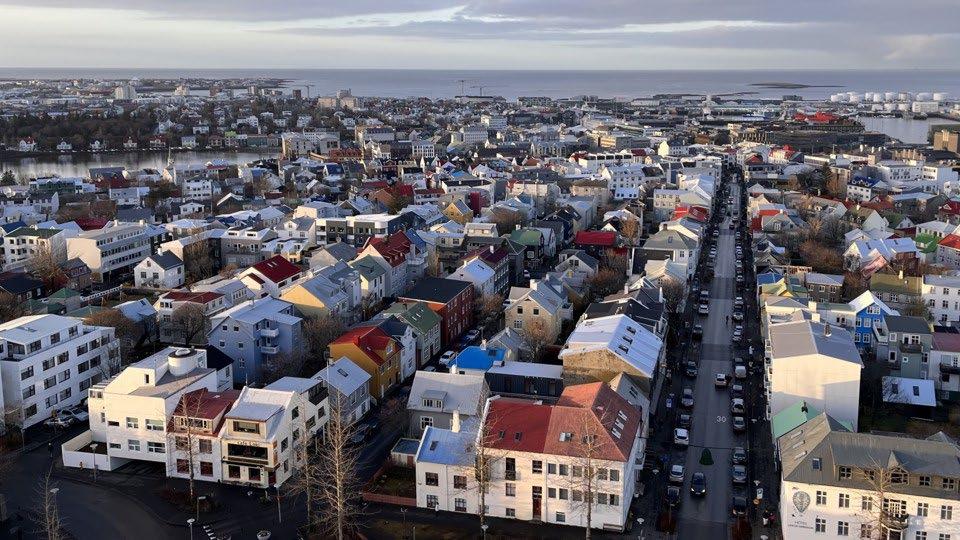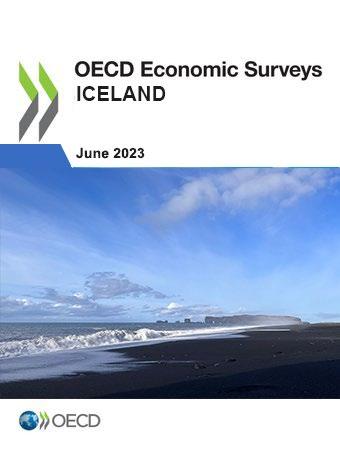ECONOMIC SURVEY OF ICELAND
Making the most of a strong rebound

Reykjavik, 20 June 2023

OECD Economics


OECD




Reykjavik, 20 June 2023

OECD Economics


OECD




Note: Inflation refers to national headline CPI.
Source: Central bank of Iceland and OECD, Consumer Prices database.

Note: Fiscal balance is the difference between total government revenues and expenditures. Underlying budget balance is the difference between total government revenues and expenditures corrected for the cycle and one-off events.
Source: OECD Economic Outlook No. 113 database.

Source: OECD Economic Outlook No. 113 database.




Hours worked ( % of full-time work)
Note: The marginal effective tax rate (METR) is computed according to the formula METR=1-(Δy net earnings)/(Δy gross earnings) for a two-earner couple with 2 children, claiming social assistance and housing benefits, whenever eligible. Annual housing costs are set at 20% of average wage of Iceland. In both panels, the second earner earns 67% of the average wage of the first earner.
Source: Own calculations based on output from the OECD tax-benefit model, version 2.5.0.

The tax-benefit system should encourage second


Index 0 (less stringent) to 6 (stringent), 2018
Note: A higher indicator value means more stringent regulation.
Source: OECD, Product Market Regulation database.
Data for 2019 except Finland (2018) and Sweden (2014).
Source: Statistics Iceland; OECD, Tourism database.





Panel A: 2023 refers to first quarter only. Panel B: immigration flows into Iceland, including both Icelandic and foreign citizens who obtain a residence permit or a work permit for over three months; the other Nordics include Denmark, Finland, Norway, and Sweden.
Source: Statistics Iceland; Nordic Statistics database.

Calculations estimate the effect of expanded labour supply on GDP based on ‘baseline’ (keeping current demographic trends and net migration at 2019 levels) and ‘no migration’ (net migration is set to zero) scenarios.

A. Median age of the foreign-born and native-born population, 2022
B. Activity rate by background, 15-64 years, 2021
Panel A: data refer to population as of 1 January 2022 for all countries. Median values were imputed based on Eurostat age-distribution interval data.
Panel B: activity rate is calculated as economically active (employed and unemployed) working age (15-64) population divided by the total working-age population. In both panels, OECD-EU average refers to the simple average of the EU countries that are OECD members.

Percentage of the highly educated population aged 15-64 not in education, 2021
Over-qualification refers to highly educated individuals (ISCED 2011 Levels 5-8) who work in a job that is ISCO-classified as low- or medium-skilled (ISCO Levels 4-9).
Source: OECD, “Settling In 2023: Indicators of Immigrant Integration”, forthcoming.

Establishing a one-stop shop would ease skills recognition and would make language training courses more effective
Score-point difference in reading performance associated with immigrant background

After accounting for gender and socio-economic background
After accounting for gender and socio-economic background
Score difference
Score difference
Note: Socio-economic background refers to students’ and schools’ socio-economic profile.
Source: OECD, PISA 2018 database.
Implementation of measures for students with a diverse linguistic background is welcome and needs to continue

Teachers with more than 10% of students whose first language is different from the language of instruction, 2018
% of teachers
Source: OECD, Teaching and Learning International Survey (TALIS) database.
% of teachers
Aged 18 or older, 2018
The overcrowding rate is the share of the population living in a household that does not have enough rooms at its disposal as defined by Eurostat in its Living Conditions Survey.
Source: Eurostat, Living Conditions Survey.

Better integrating migrants also requires meeting their housing needs




Disclaimers:
The statistical data for Israel are supplied by and under the responsibility of the relevant Israeli authorities. The use of such data by the OECD is without prejudice to the status of the Golan Heights, East Jerusalem and Israeli settlements in the West Bank under the terms of international law. This document and any map included herein are without prejudice to the status of or sovereignty over any territory, to the delim itation of international frontiers and boundaries and to the name of any territory, city or area.